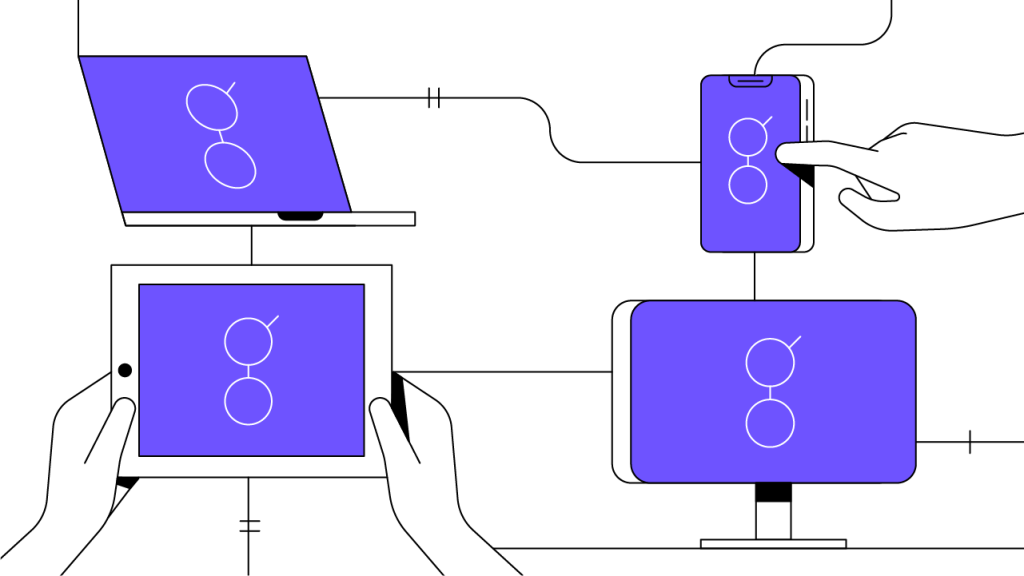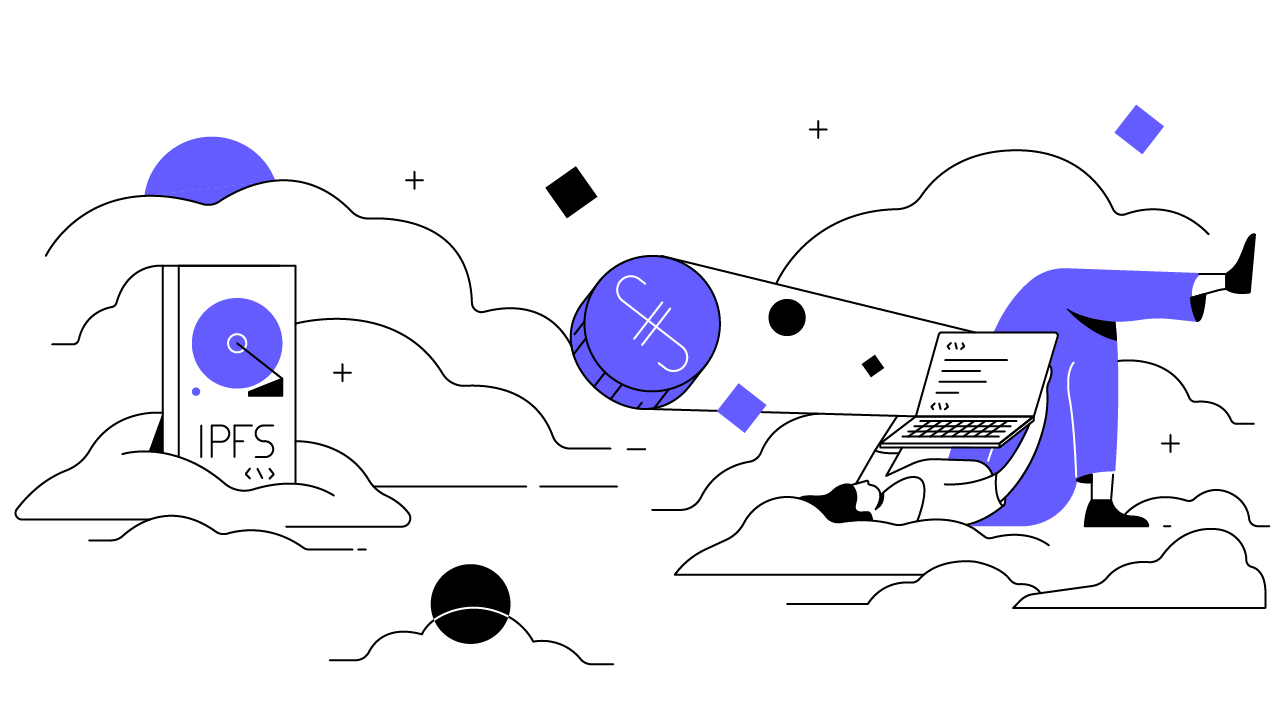Contents
Golem Network (GLM): Censor-Resistant Computing Power
Golem Network (GLM) is democratizing cloud computing by bringing untapped processing power to the sharing economy in a decentralized peer-to-peer network.
By Piotr Janiuk, CEO, Golem Network
Updated October 23, 2023 • 3 min read

Summary
Golem Network is a platform born in 2015, with the aim of democratizing access to censorship resistant computing power. This is facilitated by a cutting-edge protocol that allows users to supply and lease providers’ idle hardware in a peer-to-peer (P2P) manner. The settlement layer of the protocol, fueled by the Golem Network Token (GLM), allows for the creation of a shared and alternative economy where users earn passive income by leasing their hardware. All these features combined allow developers to build on top of the platform as they’d build on regular cloud infrastructure, without the issues associated with centralized platforms.
Golem Network’s Innovative Approach to Computing Power
Purchasing hardware can be expensive — not to mention impractical — due to space and power requirements. Renting computing power from cloud providers is risky, as they have total control over your data. As a result, many people in need of extra computing power have difficulty accessing this resource at sufficient levels.
However, most computers and digital devices rarely use their full computational capacity — and many of them are connected to the internet most of the time — leaving web-accessible, latent processing power unused. That’s where Golem Network comes in. Golem’s state-of-the-art platform provides crowdsourced computational power from individuals who hold a surplus of computational resources. The network’s alternative economy is quite similar to how Uber enables car owners to monetize cars they already own (as Uber drivers), and how Airbnb enables property owners to earn income from renting out their unused rooms or houses.
Golem Network’s pay-for-usage model eliminates infrastructure demands and barriers to entry for computing power. The model also gives censorship-resistant control over computations back to developers, as tasks are not centralized with a single provider node.
How Golem Network Powers P2P Computing
Golem provides an open-source platform that is flexible, entirely programmable, and helps to promote creativity for software developers, regardless of their geographical location, background, or affiliation with the ability to adapt to a large audience. From large universities to scientists, startups, or artists, anyone can leverage the world’s unused computing power to conduct data-intensive research and complex computations through the Golem Network. Golem’s proxy-free environment is custom-built for open-source interactions and developer-friendly, creative execution. Golem is capable of computing a wide variety of tasks, including CGI rendering, machine learning (ML), and scientific computing. Overall, Golem’s limitations are in large part just defined by the developer community’s creativity.
With the help of the Golem Network Token, also called GLM, the network provides a system with multiple checks and balances to promote best practices and facilitate properly functioning interactions between the platform’s customers and sellers. A user who accesses the Golem Network to rent computational capacity is called a “requestor,” while the party selling computing power is called a “provider.”
Projects executed through the Golem Network are required to perform the following steps:
The requestor submits a task on the Golem Network.
This task is broadcast with a demand which puts the specification of required resources, as well as acceptable commercial terms.
The network’s providers have an offer published for their computational resources on the Golem Network market.
Demands and offers will be matched and the market will route them so that requestors are put in contact with potential providers to negotiate the “terms of business.”
When the two parties have come to an agreement on the terms of business, input files are transferred to the provider node and the task is started by the provider.
Once complete, the output files are transferred from the provider to the requestor, payment notes must be issued in order for the provider to receive payments for services, and then the provider is paid with the Golem token.
GLM's Innovative Use Cases
Golem continues to evolve in order to offer the best developer experience, taking into account the community’s feedback to make constant improvements since its first release on March 1, 2017, and implementing the first use-case of 3D model rendering. Golem’s blockchain mainnet release was on March 10, 2018, and the Golem Network has been fully operational since then. 3D rendering was a logical first industry to approach due to the substantial number of artists and animators who couldn’t complete their computationally heavy projects due to restrictive computing power costs. Golem offers these users a cost-effective solution for accessing the resources they need. But Golem’s aim has always been to be a multi-purpose platform, and its progress proves this.
Golem Network is working to build a more widespread customer base, including not only developers and tech professionals, but also enthusiasts and casual users. To achieve these goals, Golem proposes a more overarching platform for generalized distributed computation called New Golem, which opens up much broader possibilities than Legacy Golem or other platforms in the field of decentralized computation have been offering.
Ultimately, Golem takes advantage of regularly incurred, deadweight computational processing loss that arises when the hardware is not being used or computational resources are not being expended.
Tapping into this resource, and combining it with the state-of-the-art Golem blockchain platform built through an iterative loop of feedback and frequent product releases by a team of world-class computer scientists and software engineers, Golem provides an extremely reliable alternative to cloud infrastructure and data centers for today’s marketplace.
As the world takes the first steps towards a technological paradigm shift to replace the big tech monopolies with fairer systems, the need for decentralized and censorship-resistant infrastructure becomes clearer. Golem is building a truly open, democratized, borderless platform everyone can access and leverage. Its innovative platform also creates a new framework for the sharing economy that allows credible users to opt-in and receive services while furthering the stability of the network at the same time. These factors create a strong overall value proposition for Golem Network as a cutting-edge solution focused on shaping the future of computer-based power consumption and resource allocation.
Cryptopedia does not guarantee the reliability of the Site content and shall not be held liable for any errors, omissions, or inaccuracies. The opinions and views expressed in any Cryptopedia article are solely those of the author(s) and do not reflect the opinions of Gemini or its management. The information provided on the Site is for informational purposes only, and it does not constitute an endorsement of any of the products and services discussed or investment, financial, or trading advice. A qualified professional should be consulted prior to making financial decisions. Please visit our Cryptopedia Site Policy to learn more.

Author
Piotr Janiuk
CEO, Golem Network
Piotr Janiuk is the CEO of Golem Network. He designed and developed the first Golem PoC and helped design the high level architecture of both implementations of the Golem Network platform. He also designed and implemented the Golem crowdfunding contract and presented Golem Network in the very first Ethereum Developers conference, DEVCON0. Previously, Piotr was a designer and lead developer of Black Vision, a real-time rendering engine for TV broadcasting. He implemented the fastest (at the time) software jpeg2000 codec for DCP. Janiuk holds a MsC in Mathematics and Computer Science.
Is this article helpful?


